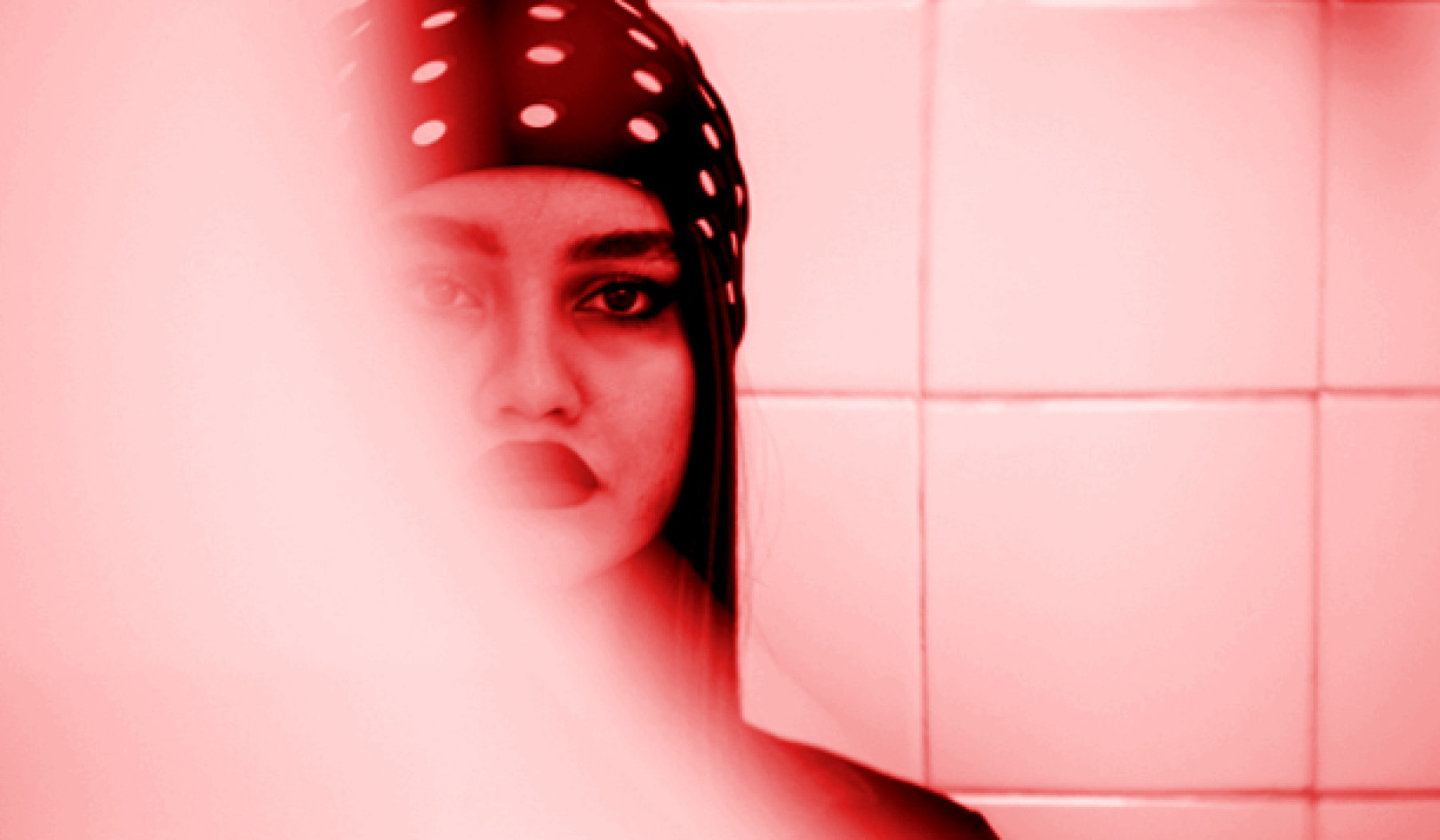
What do science fiction writer Isaac Asimov, actress Geena Davis, three-year-old Emmelyn Roettger, and even the animated character Lisa Simpson have in common? Membership in Mensa, which “fosters human intelligence for the benefit of humanity.”
Many Mensa questions are based on pattern recognition and determining what does or doesn’t fit. For example: Which body part is the odd one out—cornea, macula, lens, eyes, or iris? Really smart people seem to be saying, “The more you can see the pattern and your place in the pattern—where you fit and how things fit together—the more intelligent you are.”
Misdiagnosis or Misperception
So how important is literal eyesight and figurative vision in your ability to be successful? Little Emmelyn Roettger’s parents were told she might be autistic. It turned out she just needed glasses, and once they solved that problem she soon became the youngest US member of Mensa. And, by the way, the answer to the question above is: the eyes. The rest are all parts of the whole.
Just noticing the pattern, the way in which we are similar and are connected, can bring healing, strengthen the function of your brain, and help you to be more adaptable and intelligent. What do you see when you look at the people around you?
It is well into the twenty-first century, and there are still people who want me dead because I have the audacity to love a woman. For some people, that love is a serious lapse in judgment—a mistake that I should regret. But I do not repent the broken path that led me gaily forward to her.
Yes, I regret having an affair and hurting people along the way in my coming out process, starting with my parents. Imagine! There I was in Provo, Utah, a gift full of promise, a fifth-generation Mormon, born while my father served on a US naval ship in Japan.
Our Perception of Our Reality and Our Future
Mormons, members of the Church of Jesus Christ of Latter-day Saints, believe that before birth, we lived with our heavenly father and mother. We had choices about the family, the community, and the country we were born into. Knowing what I know now, I would still choose the same amazing family and ascribe the same meaning to my life experiences.
In figuring out the pattern, I am constantly interpreting what I see and assigning it a meaning, a value. I think we all do this, though some of us might be more attuned to it than others. When my brother would take his three small boys to a store or a friend’s house, he would walk in the door, look around, and say, “There! That chair is the time-out chair.” His boys knew if they were good they could roam around, but if they were bad they would be sitting in that chair.
The funny thing was, they might sit in any number of chairs in the course of an afternoon, but unless forced to they would never, ever sit in the time-out chair. My brother’s words irrevocably changed the chair’s meaning. Just his words had a powerful impact on a physical object and others’ perception of it.
We Are All Deeply Connected to Each Other
My parents are responsible for instilling a unique point of view in my siblings and me, I think. My father was an international businessman; my mother was an artist. Because of my family, “home” took on a series of unusual meanings. I know how small the world is and how deeply we are connected.
I have seen beautiful patterns in the wings of a huge iridescent blue morpho butterfly, the Parisian night sky from the very top of the Eiffel Tower, a blue domed mosque on the Silk Road near the Afghan border, and a pride of lionfish in the Red Sea. Each image is a story without regrets.
When I was in my early twenties, I volunteered for the requisite year and a half of missionary service for the Mormon church and was called to the Tokyo North Mission. It was here that I learned the depth of my emotional strength, and did the hardest thing I have ever done: I shared what I believed deep down in my soul in an effort to bring people into my world and share the way I see our connection to the universe. I trained myself to be an extrovert, to talk to strangers, to find where you and I can connect. I also learned Japanese, which meant I could do anything.
When You See the Big Picture, You See No Errors
Once you see the big picture some things never feel like errors. As I kissed a girl during my junior year at Brigham Young University, I could almost hear outer voices cry, “Repent!” I felt compelled to keep it a shameful secret until I graduated in 1982, but I know now that my inner knowing was telling me all along that one thing leads to another, and now I am in the best relationship I can imagine. Most days I feel an overwhelming sense of gratitude for my experiences.
I do have some regrets, though. I regret allowing an ophthalmologist to predict my future when I was just twenty-eight years old. “Kimberly, you need to think about your life if you become blind. It is genetic, so there is nothing you can do.”
I wish I had said to him: “Bring it on! You have no idea who you’re talking to. You have no idea about my drive, my curiosity, and my potential. You have no idea what might be discovered tomorrow that will change the face of genetic medicine forever or the healing potential of alterna tive medicine.”
Instead of saying those things I just sat, stunned, and noticed the world suddenly seemed a little darker. My life as a professional photographer was already starting to slip away. But without that day I might not have gone to massage school, a profession where you don’t necessarily need your sight, and I might not have gone on to study nutrition, acupressure, integrative manual therapy, or even the magical matrix energetics.
Do You Believe We Live In A Friendly or Hostile Universe?
If I could travel back to that day in the ophthalmologist’s office, I wouldn’t change the trajectory that has created life long learning and an amazing array of skills. Having walked a ways along the path of recovery, I can now reach out a helping hand to others, as I currently enjoy the best eyesight of my life. The brilliant physicist and inventor Albert Einstein said, “The most important decision we make is whether we believe we live in a friendly or hostile universe.”
One of my clients put it this way: “I never wish bad things for people, but I am glad you almost went blind. You understand what I am saying, right?” I know she wishes me no harm. It is just that without experiencing that migraine pain, genetic eye dysfunction, and “impossible” diagnosis for myself, I might not be here supporting her recovery from the muscle weakness in her legs, and the fear driven deep into her heart by doctors predicting bad things for her future.
My Biggest Mistake
My biggest mistake was listening to the often well-meaning people who predicted negative outcomes, made assumptions about me and where I fit in, or assigned their own meaning to events and experiences in my life. But I have learned that since none of us can actually see the future, the smart choice is to predict a good one.
It is an interesting thing, our habit of making judgments without quite enough information. Lately, instead of trying to figure out what is good or evil, true or false, I try to see what is valuable. If it is useful, I employ it to improve the quality of my life, speed up healing in others, and help people feel stronger, move better, and contribute more fully to the community. I listen to other people’s views on what I should or shouldn’t do, but what I feel in the patterns and flow of my life matters the most. And I am grateful for all the pieces, regardless of how others may judge my life.
So in the end, will my life be just a mix of accidental things that randomly happened? If so, I have been incredibly lucky. Perhaps fifty-five years ago, the universe and I planned out my life as part of some grand design. Perhaps I have experienced things so that I can creatively contribute in just the right way for you and for me.
Learn from other people. Absorb their wisdom and what is positive in what they offer. But above all, remember to believe in yourself.
©2013. All Rights Reserved.
Reprinted with permission of the publisher,
Hierophant Publishing. www.hierophantpublishing.com
Article Source
 No Mistakes!: How You Can Change Adversity into Abundance
No Mistakes!: How You Can Change Adversity into Abundance
by Madisyn Taylor, Sunny Dawn Johnston, HeatherAsh Amara, et al.
Click here for more info and/or to order this book.
About the Author of this excerpt
 Kimberly Burnham, PhD, known as “The Nerve Whisperer,” helps visionaries improve their eyesight, insights, confidence, and brain health. Backed up by a PhD in integrative medicine, her childhood as a global nomad, and her own vision recovery, Kim is passionate about helping people see and feel seen. She works toward healing social issues like bullying and global statistics like 2,000 suicides a day, as well as creating food sustainability in partnership with organizations like Hazon, which means “vision” in Hebrew. See Kim and read her other published work at: www.kimberlyburnham.com.
Kimberly Burnham, PhD, known as “The Nerve Whisperer,” helps visionaries improve their eyesight, insights, confidence, and brain health. Backed up by a PhD in integrative medicine, her childhood as a global nomad, and her own vision recovery, Kim is passionate about helping people see and feel seen. She works toward healing social issues like bullying and global statistics like 2,000 suicides a day, as well as creating food sustainability in partnership with organizations like Hazon, which means “vision” in Hebrew. See Kim and read her other published work at: www.kimberlyburnham.com.
Watch a video with Kimberly: Quantum Physic Particles and the Many Ways of Healing























